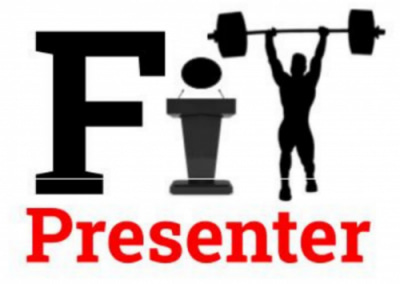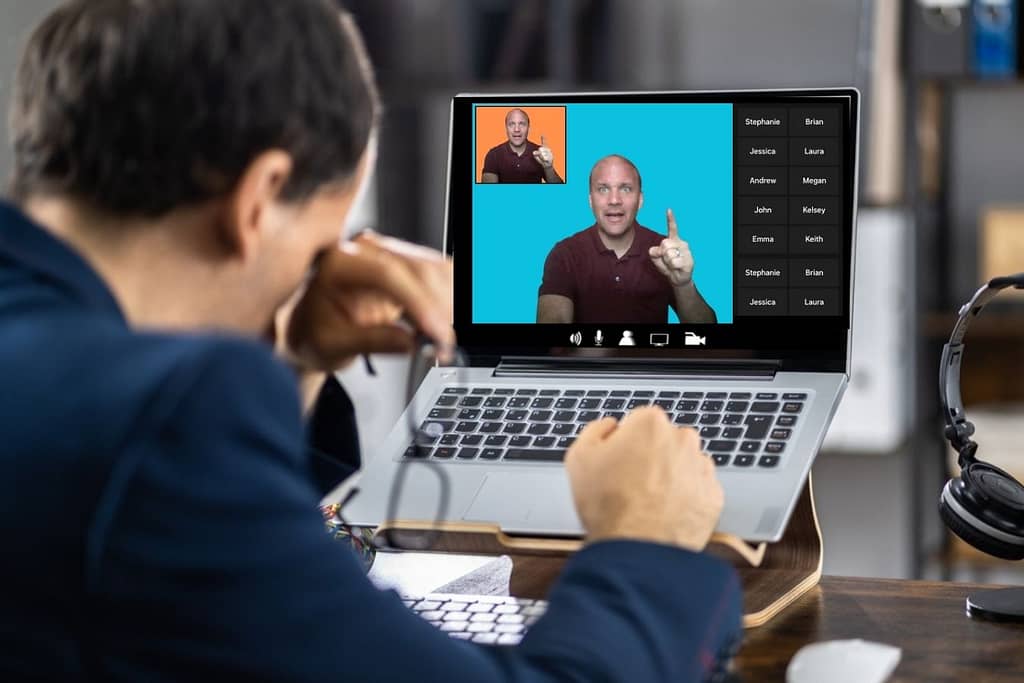Brace yourself for the greatest opening line in the history of spoken word. Presenters all around the world explode onto the virtual stage with this phrase. Are you ready?
Coming at you in 3 … 2 … 1…
“Hold on a second, I’m just going to share my screen. Um, let’s see … Ch-ch-ch-chhh … Can you see it now? Oh, okay there it is.”
You didn’t spill your drink reading that, did you? I tried to warn you, it was going to be awesome.
Despite the general consensus that presentation software like PowerPoint can put a sleeper hold on your audience, this writer has seen that concern go out the Microsoft window once the speaker stands before the mighty webcam. Once we went digital, the admonition of “Death by PowerPoint” added a disclaimer – “But not when I do it.”

Before you invest thousands of dollars into training courses on how to add life to your virtual presentations, let’s start with some free pointers on what is painfully obvious. But first, let’s get all of the jargon out of the way.
Pivot, pandemic, paradigm shift, new normal, retool, society, digital age, post-millennial. That’s it. Never again will you see those terms on FIT Presenter.
Virtual presenters didn’t take very long to adopt the worst speaking tendencies that we once saw in an airtight conference room. We suffer the same pointless technology, monotone delivery, and complete disregard for the audience that we endured in person, compounded by the fact that now we can’t even see the speaker.
That leaves us with a choice. Shrink your image to postage-stamp size next to a text-only screen while the audience drifts off to Neverland via the magic of Alt+Tab, or break through the fourth wall beyond your computer screen.
Have a seat up front
When you log into that Zoom call, Google chat, or Teams meeting, tell yourself that you are at an advantage over a live presentation. A live presentation works in a three-dimensional space, while a virtual talk works in a six-dimensional space.
That was not a typo. As long as you have an upgraded camera and microphone, you have a seat in your audience’s living room or workspace. A virtual call is not a 2-D flat screen flatland. If you incorporate your audience into your presentation, you have a great advantage over a live event.

In a cyber-classroom, everybody has a front row seat. They can see your face close up, and your facial expressions compound your point. The simple act of leaning forward or backward in your chair changes the mood of your message. You also have access to physical props that draw the audience in. You can double the impact if you let them play show and tell with their physical items.
Better yet, you can have a scavenger hunt. Send them on an errand to retrieve personal realia to bring into the presentation. A word of caution – a room full of stone-faced, corporate minded boring adults will turn into a kindergarten once they show their items through a webcam.
You can also incorporate your environment like you see below. For the record, the proper modal is "I was able to crawl through the bars," not "I could crawl through the bars." We're referring to a specific moment, not a period in time.
Behold the ivory towers
Think of an industry where people typically don’t like to speak in public. What comes to mind first? A live audience usually mentions engineers right away. Would you believe that teachers also rank high on that list?
On a typical faculty training day, teachers are put into groups, given a subject, and tasked to prepare a lesson. If you remember the old childhood game of 1-2-3 “Not it!” then you can envision what always happens next. The teachers race to raise their hands and shout “PowerPoint!”
The first teachers to suggest a boring, conventional lesson plan will likely be the next to become a school administrator. Those who forsake quality teacher-student interaction end up as the authority on how curriculum is written.

When the language institute where I taught resumed classes in 2020, we on the faculty were treated to hours of virtual meetings to train on the new technology. It was great to learn Zoom, but then the training went from fascinating to frustrating.
They showed us message boards to take the place of direct interaction with our students. We devolved from starfleet command, communicating across what seemed like opposite ends of the universe, to using the most complex programs for the simplest tasks.
After a month of digital indoctrination, we finally had a public forum where I managed to ask, “Have you considered the possibility that we are using too much technology?”

Stunned silence. Too much technology? The academic coordinator stammered, then asked her digital assistant to explain. The assistant replied, “Does not compute.”
In academia, software designers win the affection of ivory tower elites, who pass their recommendations to administrators, who impose technological requirements on the teachers in order to stay on the “cutting edge” of education.
Conventional teachers don’t care about the communication breakdown. They’re too busy telling management that after two years of quarantine, the workplace remains unsafe and they should be allowed to teach from home, half-drunk and half-dressed. But I digress.
The same thing we do every day
If you have prepared or given a virtual presentation at any time since the start of this decade, perhaps you have been influenced by the same technoholics who are ruining academia. Rejecting this technology is your opportunity to achieve where many educators have failed.
Tech geeks, not teachers, create presentation software. They build their platforms on the premise that nobody wants to speak directly to their students or their audience.

Your audience dynamic depends on the methodology you choose. The best and the worst presenters come from the same industry – academia. Your decision hinges on who you believe makes the academic engine run. Which example do you want to follow? That depends not so much on people, but on methodology.
Engage, Practice, Activate
As your presentation likely has an intro, body, and conclusion, a lesson plan also has three parts. Depending on the methodology, those three phases can either stimulate interaction or alienate the students.
The institute mentioned above uses P-P-P – Present, Practice, Produce. You lead off by giving the students information, oftentimes with the help of a projector. They learn passively with no chance to apply as they learn.
Other schools of thought use E-P-A – Engage, Practice, Activate. The lesson begins with the students’ contributions. The teacher elicits ideas from the students, then weaves their responses into the lesson.
If you don’t like to speak, you’ll use PPP, which is ironically teacher-focused and requires more speaking. If you’re willing to put down the duckie and step away from the screen, EPA will get the message across and raise the energy level of the room.
More lessons from the industry
In the fitness industry, we advance not by embracing every fad handed to us by invisible higher ups, but rather by questioning conventional wisdom. That's how we evolved from raw bodybuilding to integrated functional training, and put away canned routines in favor of customized programming.
The same grass roots mindset works in the speaking world. To connect with your audience, you need to reject consensus in the conference room the same way you would in the weight room.
In a virtual space, you can build the same dynamic that you would inside the gym or with a live audience. In fact, you have advantages when people are watching you from their own personal space. What can you do to present fitness-related themes virtually? Here are some tips for you:
- Give them a short exercise routine. It doesn't have to be a fully integrated, functional workout. The only goal is to stimulate the crowd.
- Replace one slide. If you are using PowerPoint or Google slides, I challenge you to remove just one slide and replace it with a story. Get to that point, then stop the share and look directly into the camera. It will feel like your newest client's first time doing a travel lunge. Eventually it will feel like you are flying.
- Nobody cares about your trophies. If you put a bodybuilding pic on your slide show, I will screenshot it and draw mean tattoos on you. Always put the focus on the audience. If you open with a list of your credentials, the audience will tune you out. Put your alma mater and average revenue on your resume, not your slides!
Comment below: How do you like to make a virtual presentation more dynamic?















